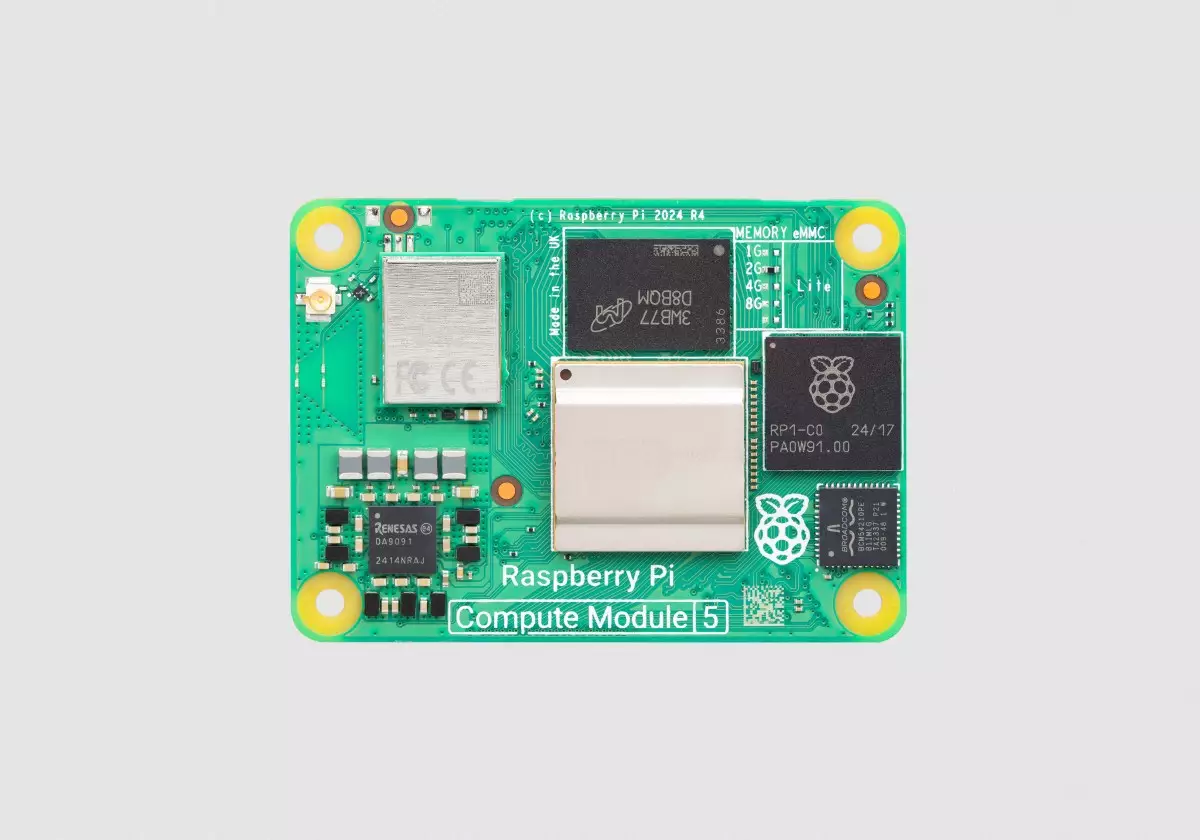Raspberry Pi has established itself as a potent force in the computing world, particularly among educators and technology enthusiasts. Known primarily for its single-board computers that are brimming with I/O ports, the Raspberry Pi series has evolved significantly over the years. The latest release, the Raspberry Pi 5, launched in September 2023, showcases an impressive advancement in power and functionality. But while the Raspberry Pi 5 attracts attention, the newly introduced Compute Module 5 deserves equally discerning focus due to its unique design and targeted applications.
The Compute Module 5 represents a shift from traditional computing devices towards a more compact, modular design, omitting conventional ports to cater for embedded applications. This innovation is especially beneficial for developers and businesses looking to integrate computing power within their products seamlessly. By streamlining the physical footprint, the Compute Module can easily be embedded within various devices, making it a great asset in sectors like automation, IoT, and industrial applications.
The significance of these modules is underscored by their sales distribution; with 72% of the Raspberry Pi’s sales attributed to industrial and embedded sectors, it’s clear that this is where the company sees tremendous growth potential. The adaptability and compactness of the Compute Module positions it as an attractive option for many companies looking to incorporate advanced computing capabilities into their offerings.
At its core, the Compute Module 5 packs some power. Starting at an affordable price of $45, it features a quad-core Arm Cortex-A76 processor, making it capable of supporting dual 4K displays at a 60Hz refresh rate. Connectivity options are robust, including Gigabit Ethernet, Wi-Fi, and Bluetooth, ensuring that it can fit seamlessly within modern networks and devices.
Furthermore, Raspberry Pi continues its tradition of offering varieties with several configuration options. Users can select from different RAM capacities (2GB, 4GB, or 8GB) and storage solutions, ranging up to 64GB of on-board flash memory. Scaling up to a more robust version comes at a reasonable $95, which still positions it competitively within the market. This modular approach empowers users to customize their solutions according to specific project requirements, whether that be for educational purposes, hobbyist applications, or commercial use.
For developers eager to dive into the possibilities of the Compute Module 5, Raspberry Pi offers an optional IO board priced at $20. This board is essential for utilizing the full range of interfaces provided by the module, vastly simplifying the development process. Additionally, a passive heatsink for $5 facilitates efficient operation, safeguarding against overheating in intensive applications.
In a world increasingly leaning towards integrated solutions, the Compute Module 5 can also be reconfigured into a compact desktop system, complete with a protective metal case. This versatility underscores its value, appealing to a wide array of users and use cases.
As 2023 unfolds, all eyes will be on Raspberry Pi to see if they further innovate their product lineup. Speculations about updates to the Raspberry Pi 400 — a device famed for its integrated keyboard and built-in computing capabilities — fuel excitement and anticipation among enthusiasts. This focus on adaptable, user-friendly technology encapsulates the essence of Raspberry Pi, making it not just a resource for learning, but a powerful tool for innovation across countless industries.
The Compute Module 5 stands as a testament to Raspberry Pi’s commitment to pushing the boundaries of accessible computing while affirming its essential role in the contemporary tech landscape.

